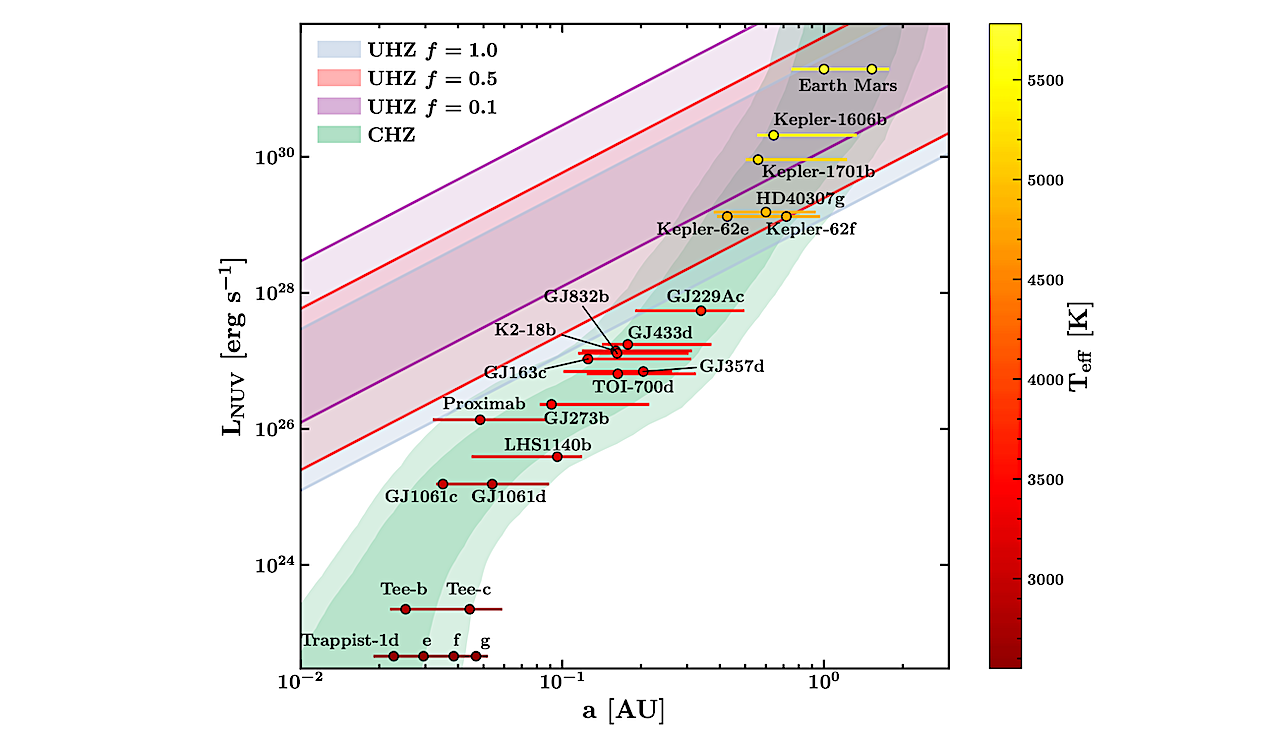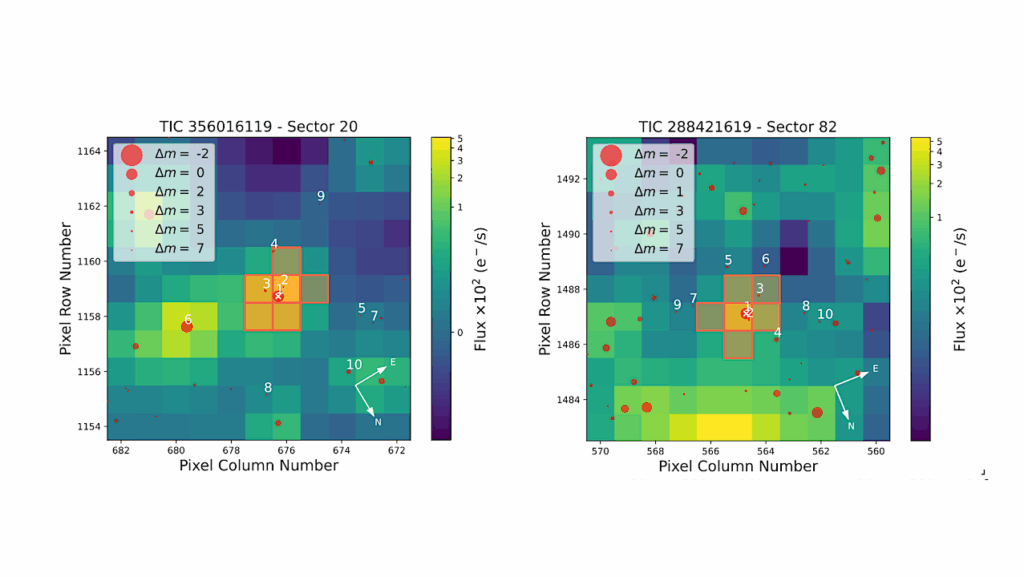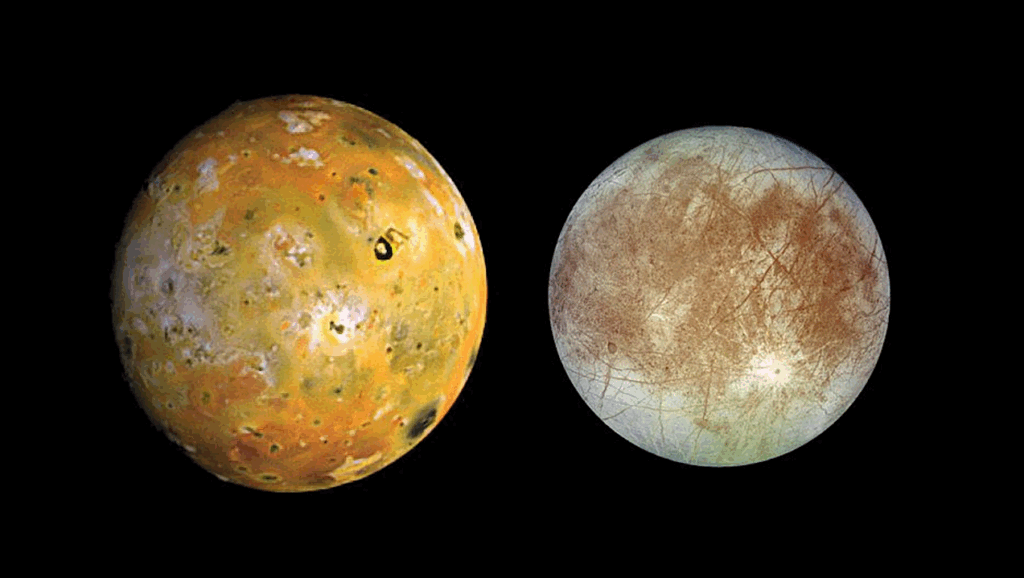The Ultraviolet Habitable Zone Of Exoplanets

The dozens of rocky exoplanets discovered in the Circumstellar Habitable Zone (CHZ) currently represent the most suitable places to host life as we know it outside the Solar System.
However, the presumed presence of liquid water on the CHZ planets does not guarantee suitable environments for the emergence of life. According to experimental studies, the building blocks of life are most likely produced photochemically in presence of a minimum ultraviolet (UV) flux. On the other hand, high UV flux can be life-threatening, leading to atmospheric erosion and damaging biomolecules essential to life.
These arguments raise questions about the actual habitability of CHZ planets around stars other than Solar-type ones, with different UV to bolometric luminosity ratios. By combining the “principle of mediocricy” and recent experimental studies, we define UV boundary conditions (UV-habitable Zone, UHZ) within which life can possibly emerge and evolve. We investigate whether exoplanets discovered in CHZs do indeed experience such conditions. By analysing Swift-UV/Optical Telescope data, we measure the near ultraviolet (NUV) luminosities of 17 stars harbouring 23 planets in their CHZ.
We derive an empirical relation between NUV luminosity and stellar effective temperature. We find that eighteen of the CHZ exoplanets actually orbit outside the UHZ, i.e., the NUV luminosity of their M-dwarf hosts is decisively too low to trigger abiogenesis – through cyanosulfidic chemistry – on them. Only stars with effective temperature >3900 K illuminate their CHZ planets with enough NUV radiation to trigger abiogenesis. Alternatively, colder stars would require a high-energy flaring activity.
Riccardo Spinelli, Francesco Borsa, Giancarlo Ghirlanda, Gabriele Ghisellini, Francesco Haardt
Comments: 8 pages, 3 figures
Subjects: Earth and Planetary Astrophysics (astro-ph.EP); Solar and Stellar Astrophysics (astro-ph.SR)
Cite as: arXiv:2303.16229 [astro-ph.EP] (or arXiv:2303.16229v1 [astro-ph.EP] for this version)
https://doi.org/10.48550/arXiv.2303.16229
Focus to learn more
Submission history
From: Riccardo Spinelli
[v1] Tue, 28 Mar 2023 18:00:04 UTC (963 KB)
https://arxiv.org/abs/2303.16229
Astrobiology








